Canada Remembers Times - 2011 Edition - Page 2
Reduce, Reuse and Recycle
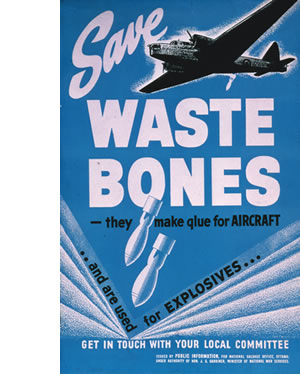
War posters like this one encouraged Canadians
to pitch in on the home front.
CWM 19920196-001 ©Canadian War Museum
Canadians on the home front during the Second World War contributed a lot to the war effort. We recycled and reduced our consumption of food and goods to support the men and women serving overseas.
Goals were set to collect tons of used rubber products which could be recycled into tires and other products important in the war effort. Tires of non-essential vehicles could even be seized! Gasoline was also rationed, with strict limits being set on how much could be used for different needs, such as personal use or agricultural requirements. More gas could then be sent overseas to help those fighting the enemy.
Canada’s kitchens also did their part. Meat, eggs, sugar, chocolate and coffee were a luxury. Ration books were distributed to keep track of what people were allowed to have. Most dishes had to be made with readily available ingredients, so many recipes were simplified.
Everyone tightened their belts to support the troops.
Georgina Pope, Nursing Sister
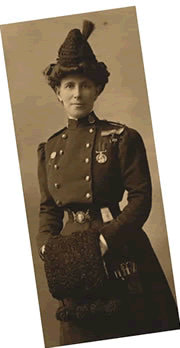
Georgina Pope. WM 19830041-182. George Metcalf Archival Collection. ©Canadian War Museum
Georgina Pope, from Prince Edward Island, commanded a group of nurses in the South African War. In 1903, she was the first Canadian to be awarded the Royal Red Cross Medal.
She became Canada’s first nursing matron in 1908, creating training programs for military nurses. Georgina Pope went overseas again in 1917 and worked near Ypres, Belgium, one of the bloodiest battlefields of the First World War.
A Mountainous Achievement
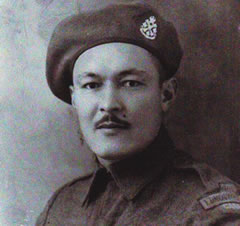
Sergeant George Alexander Campion.
Photo courtesy of Lorraine Humphrey.
A Métis from Alberta, George Alexander Campion served with the Loyal Edmonton Regiment during the Second World War.
He was awarded the Military Medal for his heroic actions during the Battle of Ortona in Italy on December 22, 1943. His company was trapped inside buildings under enemy fire. As a minefield blocked the advance of Allied tanks, Sergeant Campion twice ran into the open street, throwing smoke grenades. This provided enough cover for engineers to clear the mines, allowing for the advance to continue.
Sadly, Campion was killed in 1944 and is buried in the Cassino War Cemetery. A mountain in Jasper National Park is named in his honour.
Visit the Canadian Virtual War MemorialThe Trainbusters Club
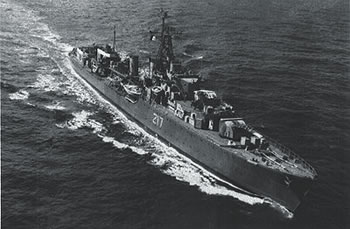
HMCS Iroquois during the Korean War.
Department of National Defence
The Royal Canadian Navy played a role in the Korean War for most of the conflict. Canadian destroyers saw action off both the east and west coasts of the Korean peninsula.
The Canadian destroyers were part of the "Trainbusters Club." The mountainous terrain in eastern Korea often forced rail lines to hug the coast, which made trains tempting targets for the United Nations naval force. Damaging trains and railway tracks disrupted the enemy’s supply line.
This was a difficult and dangerous task. On October 2, 1952, HMCS Iroquois was exchanging fire with an enemy gun battery on shore when the ship took a direct hit. Three Canadian sailors died and ten were wounded in the explosion.
Woman Flies Through Glass Ceiling!
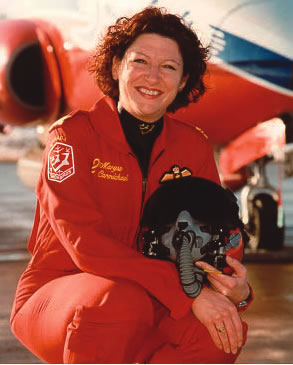
Maryse Carmichael
Department of National Defence
Canadian women’s history has been full of trailblazers—women who fought for equal rights, and who made great strides in fields like science, politics and sport.
Many women have also made remarkable accomplishments in the Canadian Forces, such as Maryse Carmichael. Inspired by her brother who was a pilot, she started out as an air cadet at the young age of 13 and joined the military full-time at 19. In the decade to follow, her career took off as she perfected her technique as a pilot.
She worked as a flying instructor, served with the 434 Combat Support Squadron and even flew the Prime Minister of Canada. In 2000, she became the first woman to be part of the famous Snowbirds Precision Flying Team, based in Moose Jaw, Saskatchewan!
In 2010, Lieutenant-Colonel Carmichael, a busy mother of two, soared to even greater heights as the first woman ever to become the commanding officer of the Snowbirds.
Canadian Hospital Ship Torpedoed
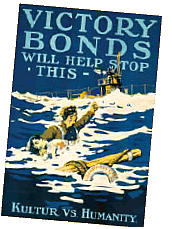
This Canadian war poster used the outrage over the sinking of the Llandovery Castle to encourage people to buy Victory Bonds to help fund the war effort.
CWM 19890086-534. ©Canadian War Museum
Life for Canada’s Nursing Sisters in wartime was often dangerous. At times, they served close to the front lines so they could better help the wounded. This put them withinrange of enemy attack.
On June 27, 1918, this danger was proven tragically true when the Canadian hospital ship Llandovery Castle was torpedoed off the coast of Ireland by a German submarine. In all, 234 people lost their lives, including all 14 Canadian Nursing Sisters who had been serving on board.
Ronnie the Bren Gun Girl
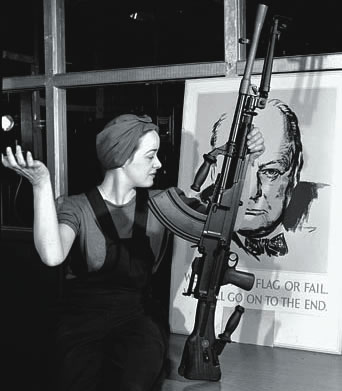
Veronica Foster in front of a poster of British Prime Minister
Winston Churchill.
Library and Archives Canada PA-117563
During the Second World War, Canadian women helped the war effort by working side by side with men in factories, in office buildings, at the job site, and on farms.
Taking on traditionally male dominated jobs, they built parts for, and helped assemble, ships and aircraft, as well as guns and ammunition. Women also drove buses, taxis and streetcars. At home they knitted socks, scarves and mitts, and they prepared parcels for Canadians overseas. They gathered materials for scrap collection drives, and helped people displaced by the war by providing clothes and setting up refugee centres. At the height of the war, more than 800,000 women worked in the service, manufacturing and construction sectors.
Veronica Foster, popularly known as “Ronnie the Bren Gun Girl,” became a national symbol for all Canadian women who supported the war effort. Propaganda posters were produced featuring images of Ronnie working on the production line at a Toronto plant that made Bren light machine guns.
All Canadian women who supported the war effort at home deserve recognition and the thanks of a grateful nation.
- Date modified: